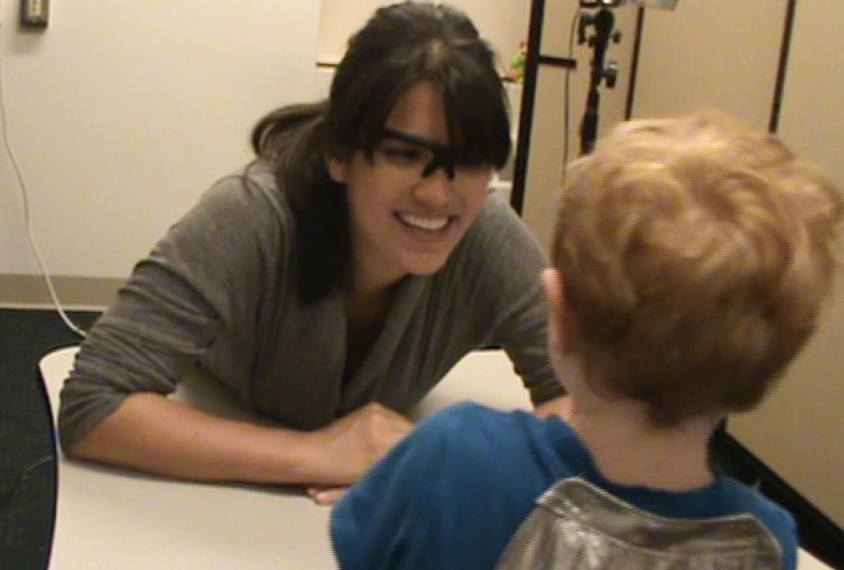
THIS ARTICLE IS MORE THAN FIVE YEARS OLD
This article is more than five years old. Autism research — and science in general — is constantly evolving, so older articles may contain information or theories that have been reevaluated since their original publication date.
A camera embedded in a pair of eyeglasses can reliably gauge a child’s tendency to look another person in the eye1.
A tendency to avoid looking at others’ eyes is a hallmark of autism and may appear in infancy — years before clinicians can diagnose the condition.
Recordings from the new device may eventually help clinicians spot toddlers at risk for the condition.
To monitor a child’s gaze, researchers typically use stationary cameras to record children playing or interacting with an adult. The researchers rate how often the child makes eye contact with the adult in the video. But these videos are taken from a distance, and eye contact is easily confused with generalized gaze at the adult’s face.
A computer can also simulate a social interaction with a talking head, while a webcam pinpoints where on the screen the child is looking. But a child may interact differently with a computer than with a person.
In the new study, published 9 January in the Journal of Autism and Developmental Disorders, a wearable camera embedded in an examiner’s eyeglasses tracked eye gaze in eight children with autism and seven typical children. All of the children were about 3 years old.
Play time:
The examiner played with each child for five minutes while encouraging the child to look at either the examiner’s face or body. For example, the examiner told the child she was going to make a happy, sad or surprised face, and at another point sang “The Itsy-Bitsy Spider” while making hand motions.
Two researchers reviewed the recordings from the wearable camera as well as those from a set of three stationary cameras. They counted all instances in which it seemed as if a child had looked at the examiner’s eyes. The researchers did not know which children have autism.
According to a statistical analysis, the research assistants were more likely to agree on the instances in which a child made eye contact when they watched video from the wearable camera than when watching footage from the stationary cameras. Also, the wearable camera footage indicated that children with autism made less eye contact with the examiner than typical children did; video from the stationary cameras revealed no significant differences between the two groups.
Although the study is small, its findings suggest that a wearable camera captures eye contact better than stationary cameras do. At $199, the wearable option is less than a third of the cost of the set of three stationary cameras. And unlike the stationary cameras, the glasses could be used to follow a child’s gaze outside the lab.
By joining the discussion, you agree to our privacy policy.